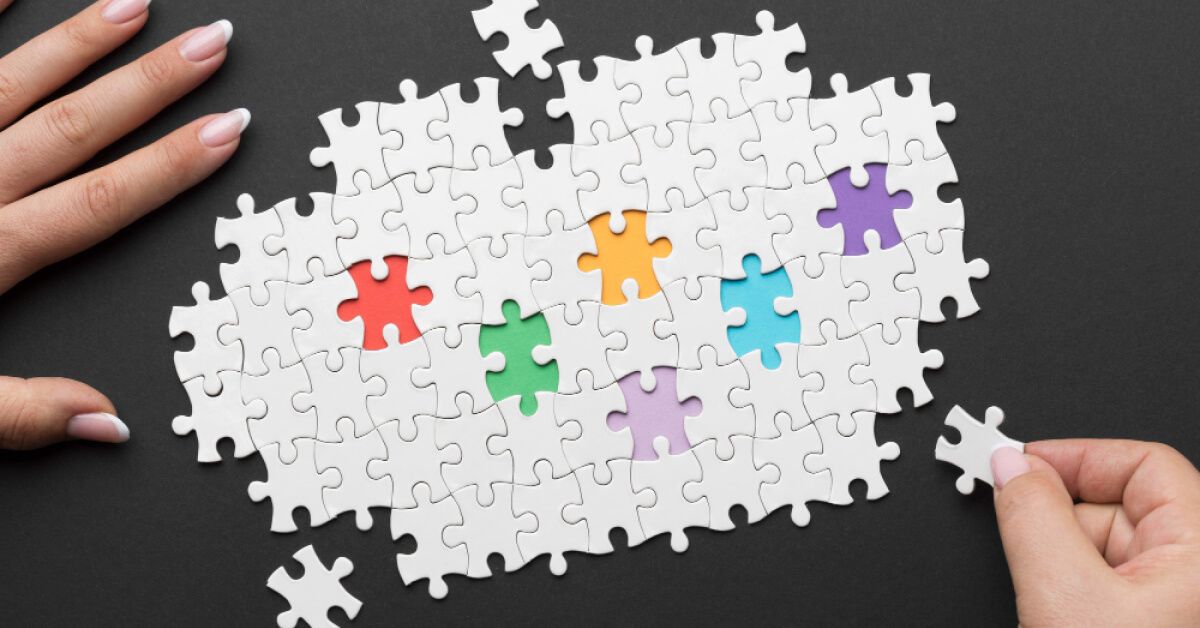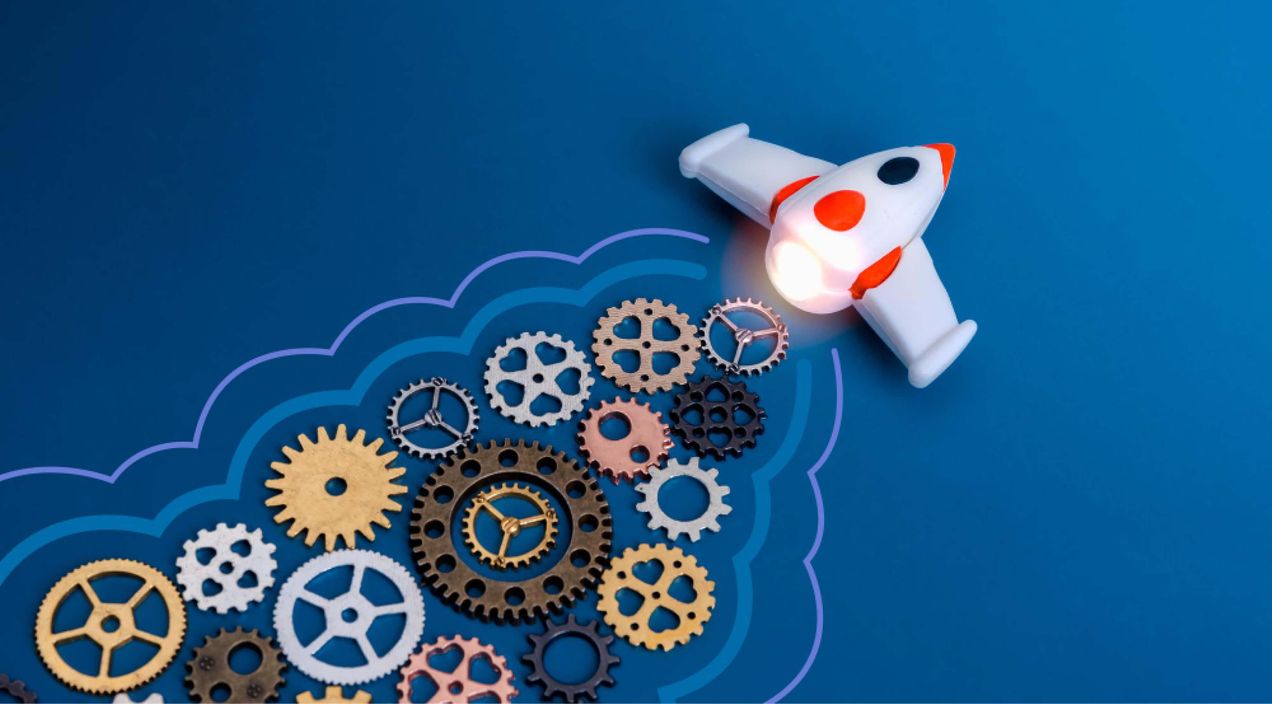Employee resource groups (ERGs): Benefits and best practices that you should know

We've all had those moments when the workplace feels more like a collection of isolated individuals rather than a cohesive team. Diverse backgrounds and perspectives can sometimes lead to misunderstandings and a lack of unity. In the fast-paced and ever-evolving world of modern business, fostering a sense of belonging and collaboration is crucial.
However, what sets successful organizations apart from the rest is their proactive approach to cultivating inclusivity and community. This is where Employee Resource Groups (ERGs) come in as a powerful tool for building a more connected and supportive work environment.
In this blog, we will explore the definition of Employee Resource Groups, delve into their numerous benefits, and discuss best practices for leveraging ERGs to create a thriving, inclusive workplace in 2024.
By understanding and implementing ERGs effectively, organizations can enhance teamwork, improve communication, and ultimately achieve greater overall company success.
What are employee resource groups (ERGs)?

Employee Resource Groups (ERGs) are voluntary, employee-led groups within an organization designed to foster a diverse and inclusive workplace. These affinity groups are typically formed around shared characteristics, similar backgrounds or life experiences, such as race, gender, disability status, working parents or veteran status.
ERGs provide a platform for employees to connect, share resources, and support common interests of both personal and professional development.
ERGs play a crucial role in promoting a sense of community and belonging among employees and colleagues. They offer support networks that help individuals navigate workplace challenges and advocate for inclusive policies and practices. By creating a safe space for discussion, ERGs contribute to a more engaged and satisfied workforce.
ERGs drive innovation and business growth by bringing unique perspectives that inform product development and marketing strategies. They also enhance the company's reputation through community outreach and corporate social responsibility initiatives.
With organizational support, ERGs can significantly benefit both employees and the broader organization.
Are employee resource groups effective?
Employee resource groups (ERGs) have proven to be highly effective in fostering a diverse and inclusive workplace. These groups, led by employees with shared characteristics or experiences, create an inclusive workplace aligned supportive environment that enhances employee engagement, satisfaction, and retention.
ERGs provide a voluntary platform for networking, mentorship, and professional development, which helps members navigate workplace challenges and concerns and advance their careers.
ERGs contribute significantly to organizational goals. They bring diverse perspectives that can drive innovation, inform product development, and improve customer relations.
By leveraging the unique insights of ERG members, companies can better understand and meet the needs of a diverse market with common identities. Overall, with proper support and resources from the organization, ERGs can be a powerful force for positive change, benefiting both employees and the broader organization.
What is the purpose of employee resource groups?

Employee Resource Groups (ERGs) are essential for fostering diversity and inclusion within organizations. These groups serve multiple purposes, enhancing both the employee experience and organizational performance for existing and new employees. Here are the key purposes of ERGs:
- Talent attraction and retention: ERGs help attract diverse talent by showcasing the organization’s commitment to diversity and inclusion. Prospective employees are more likely to join and stay with companies that actively support their identities and interests through ERGs.
- Crisis management support: During times of organizational crisis, concerns, or social upheaval, ERGs provide a crucial support system for employees. They offer a space for dialogue and solidarity, helping to maintain morale and resilience.
- Advocacy and awareness: ERGs raise awareness about issues affecting their members, advocating for inclusive policies and practices. They work to ensure that the organization's policies are equitable and that diverse voices are heard and considered in decision-making processes.
- Innovation and problem-solving: ERGs foster innovation by bringing together diverse perspectives to tackle complex problems. The creative solutions generated by ERGs can lead to new products, services, and improved processes within the organization.
- Business innovation: ERGs contribute to business innovation by providing diverse perspectives that can inform product development, marketing strategies, and customer engagement. Their insights help the organization better serve a diverse customer base and adapt to market changes.
- Leadership opportunities: ERGs provide unique leadership opportunities for members, allowing them to take on roles such as ERG chair or committee leader. These positions help employees develop leadership skills that are transferable to their primary job roles.
What are the 4 C's of employee resource groups?

Employee Resource Groups (ERGs) play a pivotal role in enhancing workplace diversity and inclusion. The effectiveness of these groups can be encapsulated in the four C’s: Community, Collaboration, Career development, and Culture. Here’s a detailed look at each of the ERG software:
1. Community
ERGs create a sense of community among employees with shared identities, common interests or experiences for both existing and new employees. This sense of belonging helps members feel supported and valued within the organization.
By providing a platform for mutual support, ERGs enable employees to share resources, discuss challenges or concerns, and celebrate successes. This community is a great place that aspect fosters stronger interpersonal relationships and enhances overall employee morale for even new hires.
2. Collaboration
ERGs promote collaboration across different departments and levels of the organization. They facilitate cross-functional teamwork and allow employees to work together on projects and initiatives that advance the group’s goals.
This collaboration not only helps in achieving specific ERG objectives but also strengthens the overall organizational network, breaking down silos and encouraging a more integrated work environment.
3. Career development
A key focus of ERGs is the professional growth of their members. They offer mentorship programs, training sessions, and networking opportunities that help employees develop new skills and advance their careers.
By providing access to leadership training and development resources, ERGs empower members to pursue higher positions within the organization, thereby enhancing the leadership pipeline and ensuring a steady flow of qualified leaders.
4. Culture
ERGs play a crucial role in shaping and promoting an inclusive workplace culture. They raise awareness about diversity issues, advocate for inclusive policies, and organize events that celebrate different cultures and perspectives.
By fostering a whole company culture full of inclusion and respect, ERGs help create a more harmonious and productive work environment. They ensure that diversity is not only acknowledged but also valued and leveraged for the organization’s success.
How do ERGs benefit organizations?
Employee resource groups (ERGs) offer numerous benefits to organizations, enhancing both the internal culture and overall business performance. Here are key ways ERGs benefit organizations:
- Enhanced employer brand: ERGs contribute to a positive employer brand by demonstrating the organization’s commitment to diversity and inclusion. This reputation can attract high-quality candidates who value a supportive and inclusive work environment.
- Improved employee well-being: ERGs provide a support network that promotes mental and emotional well-being. Employees who are ERG members feel supported and understood are more likely to be satisfied with their jobs and perform better.
- Increased innovation: By bringing together diverse groups of employees, ERGs foster a variety of perspectives and ideas. This diversity of thought can lead to innovative solutions and creative problem-solving that benefit the organization.
- Strengthened employee loyalty: Employees involved in ERGs often feel a stronger connection to their organization. This sense of belonging and support increases employee loyalty and reduces turnover rates, saving the company recruitment and training costs.
- Market insight and development: ERGs can provide valuable insights into diverse market segments, helping organizations tailor their products and services to better meet the needs of a broader customer base. This can open up new markets and drive business growth.
- Enhanced internal communication: ERGs facilitate better internal communication by providing a platform for employees to voice their concerns and ideas. This improved communication flow can lead to greater organizational cohesion and more effective teamwork.
ERGs vs. BRGs: Is there a difference?

Employee Resource Groups (ERGs) and Business Resource Groups (BRGs) are both crucial components in fostering diversity and inclusion within organizations. While they share some similarities, they also have distinct differences. Here’s a detailed look at the differences between ERGs and BRGs:
Primary focus
- ERGs: Primarily focus on supporting the personal and professional development of employees who share common characteristics or experiences, such as race, gender, or sexual orientation. Their activities are centered around creating a sense of community, providing mutual support, and advocating for inclusive policies.
- BRGs: While they also support diversity, BRGs have a stronger emphasis on aligning their initiatives with the business goals of the organization. They work on leveraging the diverse perspectives of their members to drive business outcomes, such as market expansion, product development, and customer engagement.
Objectives
- ERGs: Aim to enhance the employee experience by fostering a supportive and inclusive work environment. They focus on personal growth, networking, and creating safe spaces for open dialogue.
- BRGs: Aim to impact the business directly by using the insights and expertise of their members to address business challenges. Their objectives include influencing business strategies, driving innovation, and improving the organization’s competitive edge.
Structure and leadership
- ERGs: Typically have a more grassroots structure, often led by passionate employees who volunteer their time. Leadership is usually more informal and focused on community-building activities.
- BRGs: Often have a more formal structure with clear business objectives and metrics for success. They are usually sponsored by senior executives and have defined leadership roles that align closely with the organization’s strategic goals.
Impact measurement
- ERGs: Measure success through employee engagement metrics, such as participation rates, satisfaction surveys, and feedback on inclusivity.
- BRGs: Measure success through business impact metrics, such as market penetration, sales growth, and product innovation. They aim to demonstrate a clear return on investment (ROI) for their initiatives.
Different types of employee resource groups

Employee resource groups (ERGs) are integral to fostering an inclusive and supportive workplace. These groups cater to various employee demographics and interests of similar backgrounds, each with distinct objectives and activities. Here are different types of ERGs:
- Disability ERGs: Focused on employees with disabilities, these groups work to ensure accessibility, raise awareness about disability issues, and provide support for those with visible and invisible disabilities.
- Parental and caregiver ERGs: These groups support employees who are parents or caregivers, offering resources for work-life balance, childcare solutions, and advocating for family-friendly policies.
- Multicultural ERGs: These groups celebrate and support multiple cultural backgrounds, encouraging cross-cultural understanding and collaboration within the organization.
- Age-based ERGs: Groups such as young professionals’ networks or groups for older employees focus on addressing the unique challenges and opportunities faced by different age demographics, fostering intergenerational collaboration.
- Environmental ERGs: These groups are dedicated to promoting sustainability and environmental responsibility, advocating for green practices and organizing community involvement in environmental initiatives.
- Mental health ERGs: Focused on promoting mental well-being, these groups provide resources, support networks, and advocacy for mental health awareness and policies within the organization.
Characteristics of an effective ERG
Effective Employee Resource Groups (ERGs) are essential for fostering an inclusive and supportive workplace. Here are the key characteristics that define an effective ERG:
Clear objectives and mission
An effective ERG has well-defined objectives and a clear mission that align with the organization’s goals. This clarity provides direction and purpose, ensuring all activities contribute meaningfully to both the group and the broader organization.
Strong leadership
Effective ERGs are led by passionate and committed leaders who can inspire, set an example and motivate members. These leaders are often trained in leadership skills and are supported by colleagues within the organization in their roles.
Executive sponsorship
Having support from senior leadership is crucial. Executive sponsors advocate for the interests of ERG, help secure resources, and ensure that the group’s initiatives align with the company’s strategic goals.
Inclusive membership
Successful ERGs are inclusive, welcoming members from diverse backgrounds who support the group’s mission. This inclusivity enhances the group’s perspectives and ensures a broader positive impact.
Regular and engaging activities
Effective ERGs organize regular activities, such as meetings, workshops, and events, that engage members and promote the group’s objectives. These activities should be relevant, well-planned, and impactful.
Metrics and accountability
Establishing metrics to measure the ERG’s impact is essential. Regularly assessing progress against these metrics ensures accountability and helps the group demonstrate its value to the organization.
Resource allocation
Effective ERGs have access to necessary resources, including funding, time, and tools. Adequate resources enable executive leaders of the group to plan and execute initiatives effectively.
Integration with business strategy
Aligning the ERG’s activities with the organization’s business strategy ensures that the group’s efforts contribute to the company’s overall success and sustainability.
How should you start an employee resource group?

Starting an employee resource group (ERG) involves careful planning and commitment to ensure its success and sustainability. Here are the steps to effectively start an ERG:
1. Identify the purpose
Clearly define the purpose and goals of the ERG. Determine what the group aims to achieve and how it will support its members and the organization. This clarity will guide all subsequent actions.
2. Gather interest and support
Survey employees to gauge interest in forming the ERG. Identify potential members and leaders who are passionate about the group's purpose. Garner support from a diverse group of employees to ensure broad engagement.
3. Seek executive sponsorship
Secure an executive sponsor who can advocate for the ERG, help secure resources, and provide visibility to the group’s activities. Executive support is crucial for the ERG’s legitimacy and effectiveness.
4. Develop a charter
Create a formal charter outlining the ERG’s mission, objectives, structure, membership criteria, and governance. This document serves as a foundation for the group’s operations and ensures clarity and direction.
5. Set clear objectives
Establish specific, measurable, achievable, relevant, and time-bound (SMART) goals. Clear objectives help the ERG stay focused and provide a framework for measuring success.
6. Plan initial activities
Organize an inaugural meeting to launch the ERG and introduce its mission and goals. Plan initial activities and events that align with the group’s purpose and engage members from the start.
7. Promote the ERG
Use internal communication channels to promote the ERG, attract members, and raise awareness. Highlight the benefits of joining and participating in the group.
8. Provide resources
Ensure the ERG has access to necessary resources, including meeting spaces, communication tools, and funding. Adequate resources enable the group to operate effectively and achieve its goals.
9. Establish metrics for success
Define metrics to evaluate the ERG’s impact and progress. Regularly review these metrics to ensure the group is meeting its objectives and making a positive difference.
10. Encourage ongoing engagement
Foster a sense of community and belonging by encouraging active participation and ongoing engagement. Regularly solicit feedback from members to continuously improve the group’s activities and impact.
When ERGs are ineffective, employees feel excluded
When employee resource groups (ERGs) are ineffective, the negative impact on employee morale can be significant. Ineffective ERGs often suffer from a lack of clear goals, leadership, and organizational support, which results in low engagement and minimal impact.
Without proper communication and inclusivity, ERGs can inadvertently create cliques, leaving many employees feeling excluded and marginalized.
The absence of adequate resources and executive sponsorship hampers the group's ability to enact meaningful change, reducing its relevance and effectiveness.
Ineffective ERGs fail to address the diverse needs of the workforce, leading to frustration and disengagement. Employees may perceive these groups as token efforts rather than genuine attempts to foster inclusivity.
This perception can erode trust in the organization's commitment to diversity and inclusion, ultimately making employees feel overlooked and undervalued.
To prevent this, it is crucial for ERGs to be well-structured, adequately supported, and genuinely inclusive, ensuring they fulfill their role in creating a supportive and cohesive work environment for employee retention.
How do ERGs support employees?
Employee resource groups (ERGs) play a vital role in supporting employees by fostering an inclusive and supportive work environment. Here are several ways ERGs provide valuable support to employees:
- Advocacy and representation: ERGs advocate for the needs and interests of their members, ensuring that diverse voices are heard in organizational decision-making. This advocacy can lead to the implementation of more inclusive policies and practices.
- Safe spaces for dialogue: ERGs provide safe spaces for employees to discuss issues related to their identities and experiences. These spaces foster open dialogue, mutual support, and understanding, helping to address and alleviate workplace challenges.
- Networking opportunities: ERGs facilitate networking among employees across different departments and levels. This networking can lead to new collaborations, mentorship relationships, and a stronger internal support system.
- Cultural awareness and education: ERGs raise awareness about cultural and diversity issues through events, discussions, and educational programs. This helps create a more inclusive and culturally competent workplace.
- Emotional and social support: ERGs provide emotional and social support to their members, helping them navigate personal and professional challenges. This support can improve employee well-being and resilience.
- Feedback and continuous improvement: ERGs serve as a feedback mechanism for the organization, providing insights into the employee experience and areas needing improvement. This feedback helps the organization continuously refine its policies and practices.
Examples of Companies Using ERGs
Employee Resource Groups (ERGs) are widely adopted by companies to foster inclusive work environments and support diverse employee needs. Here are some notable examples of companies using ERGs effectively:
Google has a variety of ERGs, such as the Black Googler Network and Women@Google. These groups provide support, advocacy, and professional development opportunities for their members, while also contributing to Google's diversity initiatives and community outreach programs.
Microsoft
Microsoft supports numerous ERGs, including Women@Microsoft and Blacks at Microsoft (BAM). These groups focus on networking, and mentoring, helping to create a more inclusive workplace. BAM, for instance, hosts an annual Minority Student Day to inspire future tech professionals.
IBM
IBM’s ERGs, such as the Women’s Leadership Council and the IBM Accessibility Group, play a significant role in shaping the company’s policies and culture. These groups work on initiatives like accessibility innovation and leadership development, enhancing both employee experience and business outcomes.
Salesforce
Salesforce has several ERGs, including Outforce for LGBTQ+ employees and BOLDforce for Black employees. These groups provide networking opportunities, professional growth, and community engagement. Outforce, for example, actively participates in Pride events and advocates for LGBTQ+ inclusion in the workplace.
AT&T
AT&T supports numerous ERGs, including The Women of AT&T and HACEMOS, the Hispanic/Latino association. These groups focus on community service, professional development, and cultural awareness, significantly contributing to AT&T’s diversity and inclusion goals.
Johnson & Johnson
Johnson & Johnson’s ERGs, such as the Women’s Leadership Initiative and the African American Leadership Council, foster leadership development and cross-cultural collaboration. These employee led groups engage in activities like mentoring programs and cultural events, promoting a more inclusive organizational culture.
Procter & Gamble (P&G)
P&G’s ERGs, such as GABLE for LGBTQ+ employees and W@P&G for women, provide platforms for advocacy, mentorship, and community engagement. GABLE, for instance, works to ensure LGBTQ+ inclusion across all P&G’s global locations.
How your organization can support your employee resource group
Supporting Employee Resource Groups (ERGs) effectively is crucial for fostering an inclusive and dynamic workplace. Here are several ways your organization can support ERGs:
- Provide executive sponsorship: Assign senior leaders as sponsors to advocate for ERGs, help secure resources, and offer strategic guidance. Their involvement demonstrates organizational commitment and enhances the group’s influence.
- Allocate resources: Ensure ERGs have access to necessary resources, including budget, meeting spaces, and communication tools. Adequate funding and logistical support are essential for the successful planning and execution of ERG activities.
- Formal recognition: Recognize ERGs formally within the organization. Acknowledging their contributions during company meetings or through internal communications reinforces their value and encourages broader participation.
- Offer training and development: Provide leadership training and development opportunities for ERG leaders. This equips them with the skills needed to manage the group effectively and align its activities with organizational goals.
- Integrate ERGs into business strategy: Align ERG objectives with the company’s business strategy. Involving ERGs in key business decisions can drive innovation and ensure that diverse perspectives are considered in strategic planning.
- Facilitate networking opportunities: Create opportunities for ERGs to network with other groups within and outside the organization. This can foster collaboration, share best practices, and enhance the impact of their initiatives.
- Measure impact: Implement metrics to evaluate the success of ERGs. Regularly assessing their impact helps in identifying areas for improvement and demonstrating their value to the larger organization.
Role of employee engagement survey platform in supporting ERGs
Employee engagement survey platforms play a crucial role in supporting Employee Resource Groups (ERGs) by providing valuable insights and feedback. These platforms enable organizations to gather data on employee sentiments, identify areas where ERGs can have the most impact, and measure the effectiveness of ERG initiatives.
By analyzing survey results, companies can pinpoint specific challenges faced by diverse employee groups and tailor ERG activities to address these needs. Additionally, engagement surveys can track changes in employee morale and inclusivity over time, helping to assess the success of ERGs in fostering a supportive work environment.
Regular feedback through these platforms ensures that ERGs remain aligned with employee needs and organizational goals, promoting continuous improvement and enhancing their overall effectiveness.
Conclusion
Crafting effective employee resource groups (ERGs) is pivotal to fostering an inclusive culture and supportive workplace. By carefully establishing and nurturing ERGs, you can uncover valuable insights into employee needs and drive meaningful change.
When it comes to enhancing and supporting ERGs, CultureMonkey stands out. Its comprehensive, customizable, and data-driven approach ensures that every voice within your ERGs is heard and acted upon.
CultureMonkey not only facilitates effective feedback collection for ERGs but also provides advanced analytics and continuous development tools, making it the ultimate choice for fostering a thriving organizational culture through well-supported ERGs.
FAQs
1. How common are ERGs?
ERGs are quite common, especially in larger organizations. Approximately 90% of Fortune 500 companies have established ERGs to support diversity, equity, and inclusion initiatives. These groups help create a more inclusive workplace and provide support networks for employees from various backgrounds, enhancing overall company culture and employee satisfaction.
2. What is an employee resource group (ERG)?
An ERG is a voluntary, employee-led group designed to foster a diverse and inclusive workplace. ERGs are typically formed around shared characteristics or life experiences, such as race, gender, or sexual orientation. They aim to provide support, enhance professional development, and promote cultural awareness within the organization, aligning with broader company goals and values.
3. What are the benefits of ERGs?
ERGs offer numerous benefits, including increased employee engagement, improved talent retention, and enhanced professional development opportunities. They help create a sense of belonging, foster inclusivity, and provide a platform for employees to voice their concerns and ideas. Additionally, ERGs can drive innovation and improve organizational performance by leveraging diverse perspectives.
4. How do ERGs support diversity and inclusion?
ERGs support diversity and inclusion by providing a safe space for underrepresented groups to connect, share experiences, and advocate for their needs. They promote cultural awareness and understanding among all employees, influence company policies to be more inclusive, and help address issues related to discrimination and bias. ERGs play a crucial role in building a more inclusive workplace culture.
5. What are the best practices for establishing ERGs?
Best practices for establishing ERGs include securing executive sponsorship, setting clear objectives and goals, and providing necessary resources and support. Organizations should offer training for ERG leaders, ensure regular communication and collaboration between ERGs and management, and continuously evaluate the impact of ERGs. Encouraging broad participation and recognizing the contributions of ERGs are also essential for their success.



